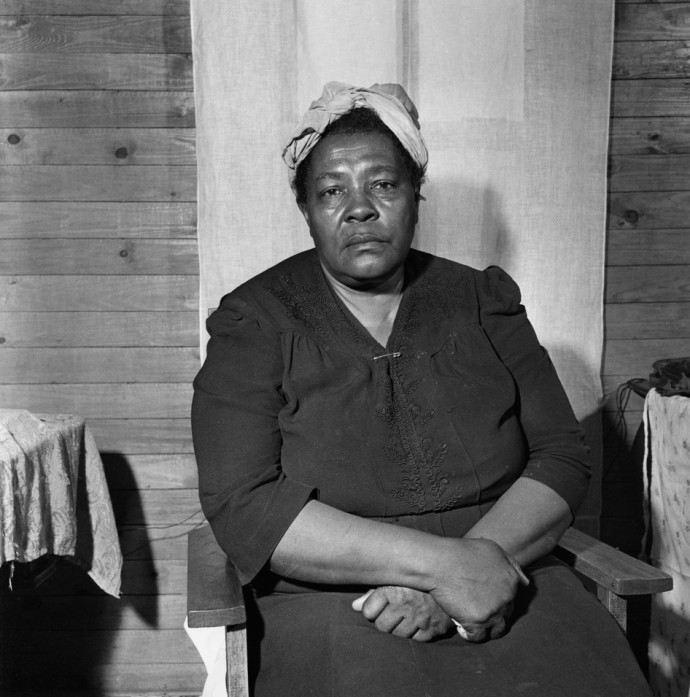
Mrs. Banks
—
Mid-1940's
Mrs. Banks was a sharecropper Sam Shaw photographed as part of a documentary story entitled "How America Lives." Mrs. Banks owned her plot of land, which was particularly remarkable for a working-class African American woman in the forties.
Sam Shaw photographed everyday people in a series called "How America Lives"
Sam said Mrs. Banks "wore her safety pin with as much pride as if it were a jeweled broach."
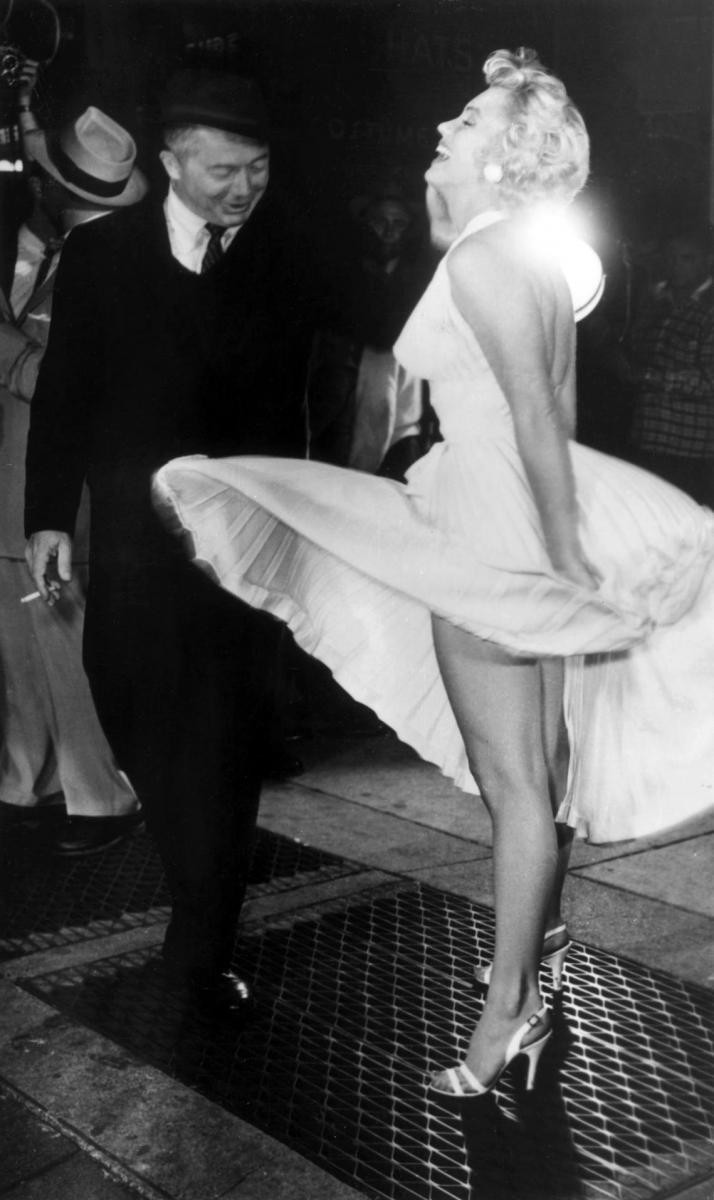
marilyn monroe,
“The seven year itchâ€
—
sam shaw, new york city, 1954
In 1941, Sam Shaw took photos of a young man and woman inside a rotating tunnel for Friday magazine. The air traveling through the tunnel blew the woman's skirt just a bit, but enough to trigger an idea 13 years later. Sam was in Coney Island with his two daughters Meta and Edie, and he noticed that a burst of wind was raising the skirts of the young women exiting a ride. He immediately thought back to the Friday shoot and thought it would be perfect to revisit the idea for The Seven Year Itch. The photo shoot was designed for maximum publicity; hundreds of photographers and journalists were invited to be present as Marilyn Monroe stepped onto the subway grate. The extra gust of wind was created by a man with an electric fan standing underneath the grate. The "flying skirt" photo became the iconic image from The Seven Year Itch and one of the most widely seen photographs in history.
The photo was front page news the next day in New York, Berlin, London, Paris, Rome, and Tokyo.
The seed for this shoot was planted in 1941 when Sam Shaw made a preliminary drawing for a photo he shot for Friday magazine
This famous pose was struck on Lexington Ave in New york City in front of what was then the Trans Lux Theater.
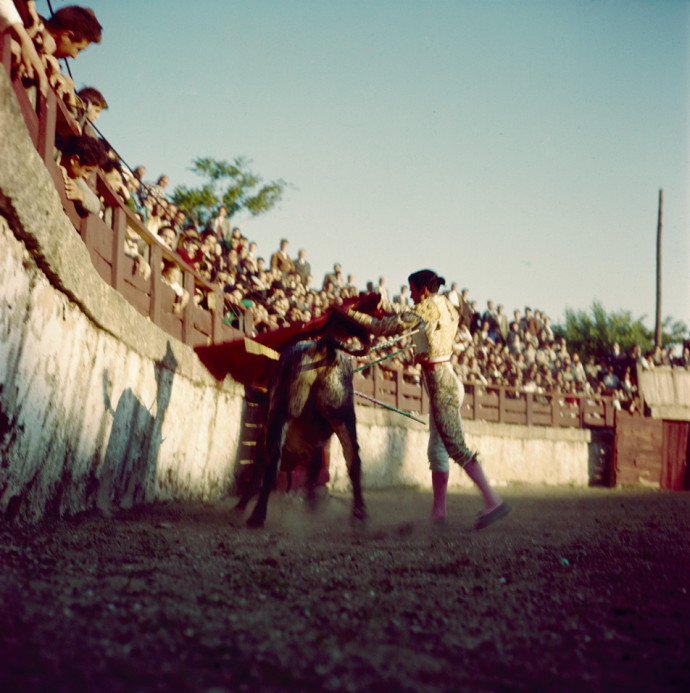
Bullfight
—
Spain, 1957
Sam Shaw became captivated by the traditional spectacle of bullfighting while living in Madrid for a year. In addition to photographing many bullfights, Sam would visit the farms where the bulls were raised. On one occasion, Sam was photographing a "not very good American bullfighter" who lost the bull's attention. The bull instead charged towards Sam who had to run as fast as he could to jump over the barrier "in the nick of time." When out to dinner with his family who arrived later that day from the US, all the waiters kept sending wine to the table, saying "torero, torero." When asked why, Sam revealed nothing to his family about the close encounter he had that day.
Sam never used a telephoto lens when photographing bullfights, wishing to be as close as possible to the action
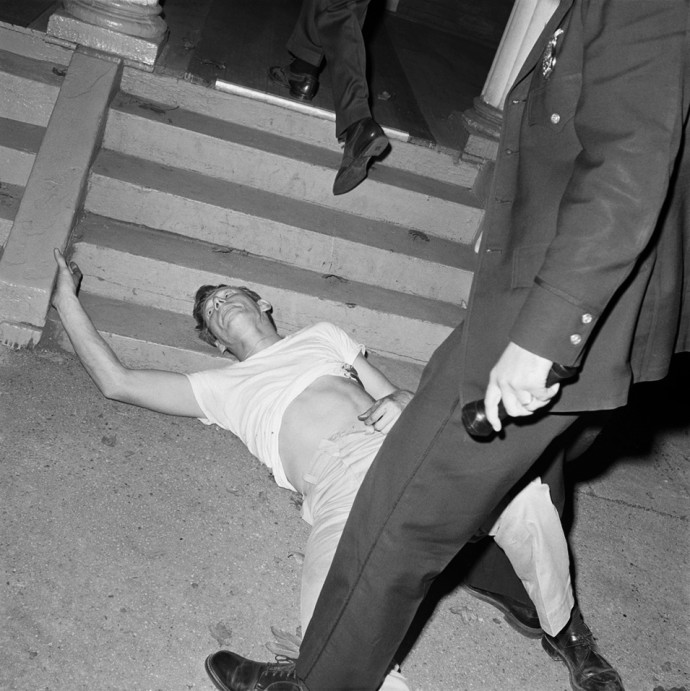
Crime Scene
—
New York City, 1962
In the early 1960's, Sam Shaw noticed that the amount of violence and crime in the US had picked up significantly. "Any photographer, professional or amateur, carrying a camera walking through any city and town of our country, if he is tuned in, aware of every rhythm and current around him, has a terrific chance to catch a disastrous fire, auto accident, a mugging, a shoot-out, a bank holdup, a DOA, a suicide, a body hurled through space leaping off a rooftop, even maybe an air crash… Whenever I travel, my camera stays strapped around my neck in set position." A contemporary of Weegee, who he considered the greatest of all "vice-and-crime" photographers, Sam also shot a series of death scene and bank robbery photos in New York City in 1962.
Weegee once wrote on a photograph, "To Sam, my only rival."
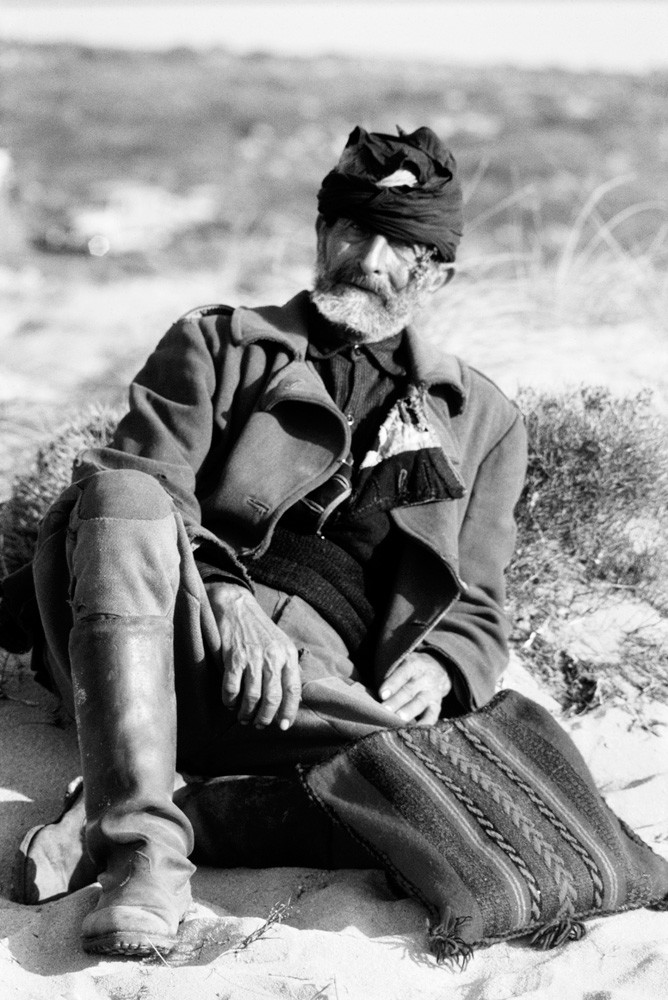
Bobadonis
—
Crete, 1964
When working on Zorba the Greek on the island of Crete, Sam Shaw and Anthony Quinn went searching for inspiration for Zorba's character. They found it in the local people "whose faces are gnarled and lined like the rocks and trees." They found it, too, in the contrast between the intense faces of the local people and "the colorful streets, cafés, waterfronts, the sea, sky, particularly the skies, in dramatic violent colors, like El Greco skies." On their search, they were particularly struck by this man named Bobodonis who lived in the foothills of Crete. He served as the inspiration for Quinn's Zorba and became the basis on which Quinn constructed his character.
Sam Shaw brought this woven bag back for his youngest daughter Edie, who used the bag throughout college and beyond
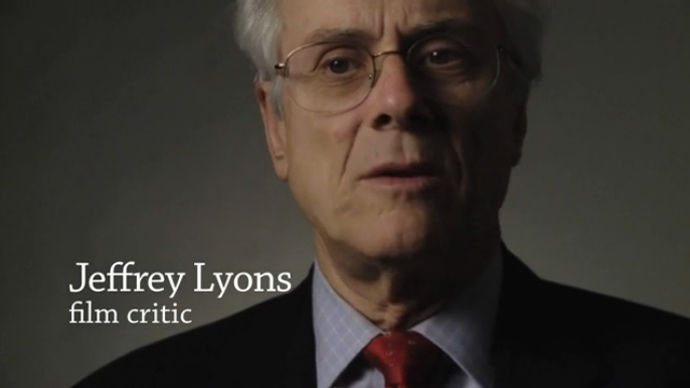
Jeffrey Lyons:
Sam Shaw: The Most Important Moment
From an interview with Jeffrey Lyons, 2012
Jeffrey Lyons has worked as a film critic on radio and television since the 1970s. He is the son of Leonard Lyons, the famed newspaper columnist known for his column "The Lyon's Den." As a life-long family friend of the Shaws, Jeffrey Lyons watched Sam work on film sets from an early age. In this clip Lyons talks about what he learned as an 11-year-old boy watching Sam on the set of The Pride and the Passion, starring Sophia Loren, Cary Grant and Frank Sinatra.
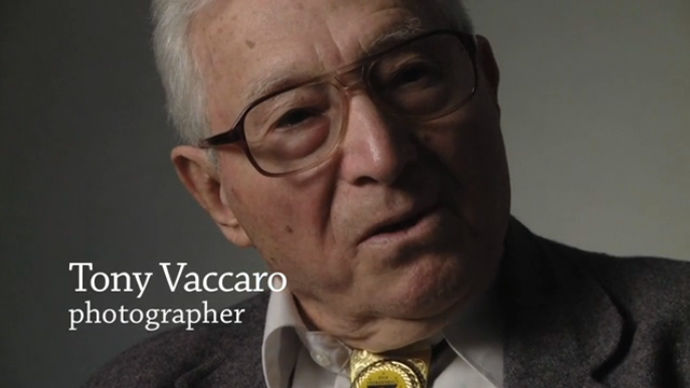
Tony Vaccaro: Do You Know That Spot?
From an interview with Tony Vaccaro, 2012
Tony Vaccaro is a photographer and was a good friend and contemporary of Sam Shaw. Vaccaro is well-known for the photos he took as a soldier in Germany in World War II and later for his long career as a fashion and lifestyle photographer for LIFE, Look, and Flair magazines. He saw Sam as a fellow "pathfinder," not waiting to get assignments but instead approaching art directors with ideas of their own and making things happen. In this clip, Tony discusses the subway grate Sam chose for the iconic Marilyn Monroe The Seven Year Itch film shoot. It was a spot they had walked by countless times, noticing the updraft of air they felt when a subway passed underneath them.
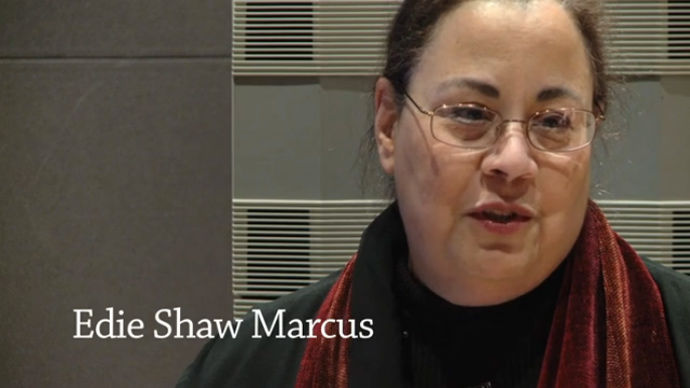
Edie Shaw Marcus:
Sam Shaw Meets Marilyn Monroe
From a panel discussion at Jazz at Lincoln Center with Edie Shaw Marcus, 2012
Edie Shaw Marcus is one of Sam Shaw's daughters. She traveled with Sam from an early age, accompanying him on various film sets and working as his camera assistant. Edie also worked in the Art Department of John Cassavetes films and is the archivist for Shaw Family Archives. In this clip, Edie recounts the first time Sam met Marilyn Monroe while working on Viva Zapata!, a film directed by Elia Kazan and starring Marlon Brando and Anthony Quinn.
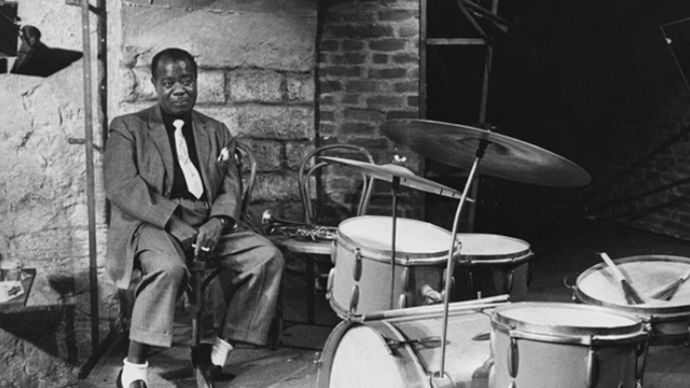
Stanley Crouch: Sam Knew
From an interview with Stanley Crouch, 2012
Stanley Crouch is a well-known jazz and cultural critic. He met Sam Shaw when Sam was working with the artist Romare Bearden and the writer Albert Murray on a book project inspired by the film Paris Blues, which Sam produced. According to Crouch, Sam was able to capture substance and depth in his photography, which was remarkable given the essentially 2-dimensional nature of the medium. Crouch also felt that Sam saw people very clearly, and in this clip he remarks on the authentic feel of a portrait Sam shot of Louis Armstrong during the making of the film Paris Blues.
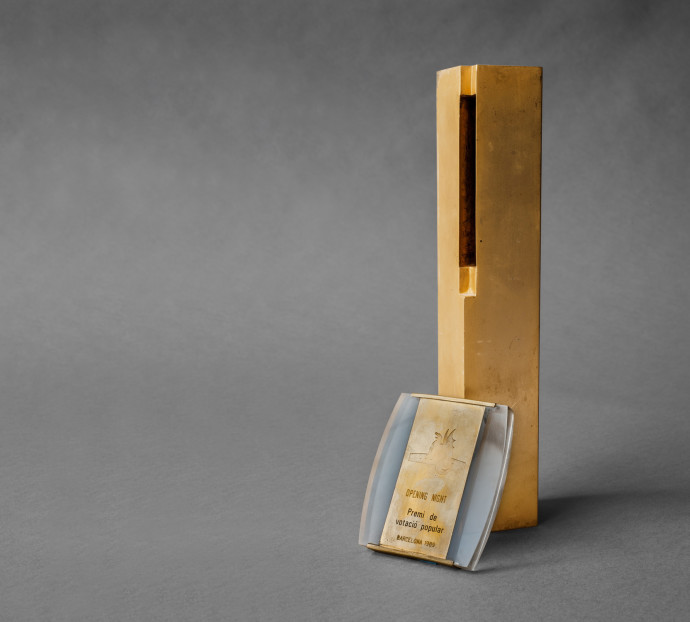
OPENING NIGHT, Audience Award
—
Barcelona Film Festival, 1989
As the producer of the film Opening Night, Sam Shaw won this Audience Award at the Barcelona Film Festival in 1989. Sam received a standing ovation when he was given the award, a testament to how much the Spanish audience appreciated the independent film and Sam's lifetime contribution to cinema. Gena Rowlands, who starred in the film, won the Silver Berlin Bear Award for Best Actress and was nominated for a Golden Globe for her moving portrayal of the troubled actress Myrtle Gordon. John Cassavetes, who directed Opening Night, was also nominated for the Golden Berlin Bear award at the Berlin Film Festival.
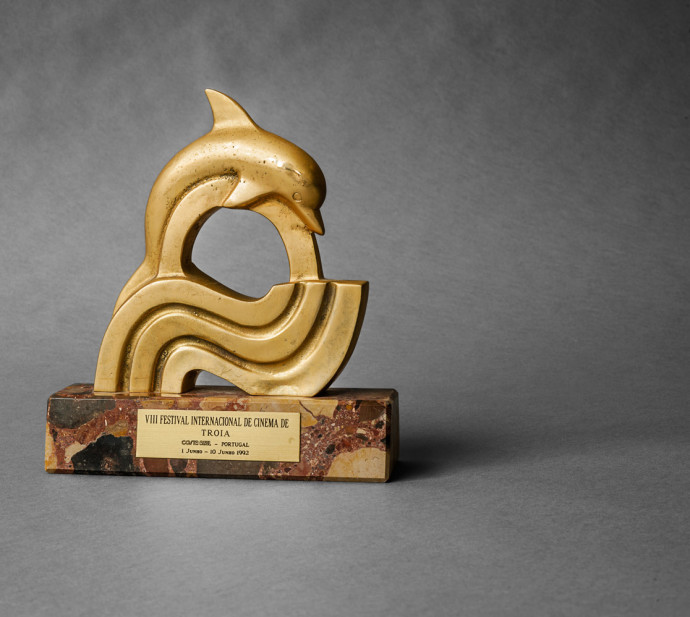
Costa Azul Award
—
Troia International Festival, 1992
Sam Shaw won this Costa Azul award at the 1992 Troia International Film Festival for his lifetime achievements in filmmaking. The festival also invited him to be part of their lecture series and to be a juror for the festival. Sam was honored to be part of the distinguished panel of judges which included Irvin Kershner, the director of Star Wars Episode V:The Empire Strikes Back.
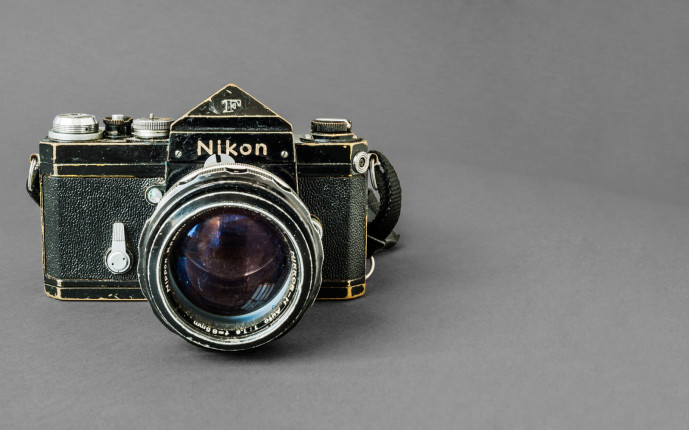
Sam Shaw's Camera
—
Nikon F
Sam Shaw was never seen without a couple of cameras around his neck. He chose the Nikon F pictured here as one of his most favored cameras because of its legendary durability. Nonetheless, the wear and tear of decades of use is visible. In addition to this camera, Sam photographed with a Rolleiflex, a Canon, and other Nikons. Typically he used a total of four cameras on his shoots, two cameras loaded with black and white film, and two cameras loaded with color film.
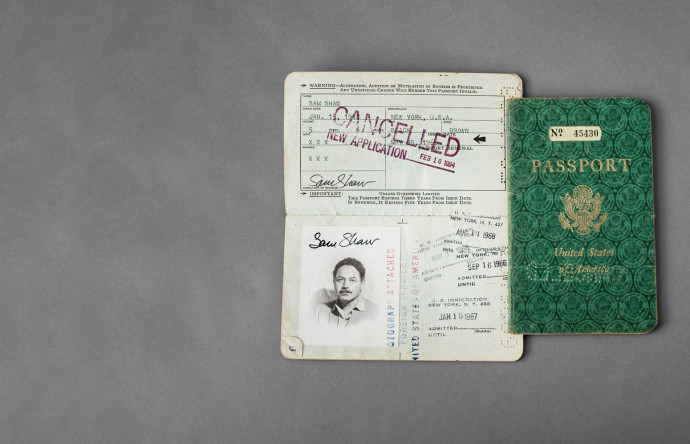
Sam Shaw's Passports
—
An inside view
Sam Shaw went through many passports, including the ones pictured here. Sam also had a cherished Vatican Press Pass, which he carried everywhere, but he never had a driver's license. Shaw preferred to keep his hands free to take photographs. As he didn't drive, a young actress named Marilyn Monroe drove Sam to and from the set of Elia Kazan's film Viva Zapata!, which is how the two met.












